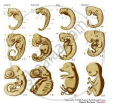Advertisements
Advertisements
प्रश्न
What are vestigial organs?
What are vestigial organs? Give one example.
उत्तर १
Vestigial organs:
Vestigial organs are the organs which are non-functional in some organisms but may have essential functions in other organisms.
उत्तर २
Vestigial organs are structures which have no apparent function in a particular organism. Examples: Tailbone, wisdom teeth
APPEARS IN
संबंधित प्रश्न
State the connecting links between Peripatus with Annelida and Arthopoda.
With the help of any two suitable examples explain the effect of anthropogenic actions on organic evolution.
Can the wing of a butterfly and the wing of a bat be considered homologous organs? Why or why not?
Explain the terms analogous and homologous organs with examples.
Name any two temporary embryonic structures in vertebrates which provide evidence for evolution.
What are homologous organs?
Select and write analogous structures from the list given below :
1) Wings of butterfly and birds
2) Vertebrate hearts
3) Tendrils of Bougainvillea and Cucurbita
4) Tubers of sweet potato and potato
Out of bacteria, spider, fish and chimpanzee, which organism has a better body design in evolutionary terms? Give reason for your answer.
The organs which perform similar functions but have different basic structure are called :
(a) asymmetric organs
(b) analogous organs
(c) homologous organs
(d) homophonic organs
The presence of which of the following types of organs in two animals indicates that they are not derived from a common ancestor?
(a) homologous organs
(b) excretory organs
(c) analogous organs
(d) reproductive organs
The wings of a housefly and the wings of a sparrow are an example of :
(a) analogous organs
(b) vestigial organs
(c) respiratory organs
(d) homologous organs
Observe the picture and answer the following questions.
A) Which evidence of evolution is shown in the picture?
B) What can be proven with this proof?
C) Give one more example of evidence of evolution
_______ is a connecting link between Annelida and Arthropoda.
Explain any three molecular (genetic) evidences in favour of organic evolution.
Long answer question.
Would you consider wings of butterfly and bat as homologous or analogous and why?
Find an odd one out.
Find an odd one out.
Write a short note:
Embryological evidences
Observe the given images and answer the following questions.

- Which evolutionary evidence does it indicate?
- What does it prove?
- State another example of evolutionary evidence.
A human hand, a front leg of a cat, a front flipper of a whale and a bat’s wing look dissimilar and adapted for different functions. What is the name given to these organs?
Flippers of Penguins and Dolphins are examples of:
Which of the following is used as an atmospheric pollution indicator?
The bones of forelimbs of whale, bat, cheetah and man are similar in structure, because ______.
Analogous organs arise due to ______.
Appearance of antibiotic-resistant bacteria is an example of ______.
How do we compute the age of a rock?
While creation and presence of variation is directionless, natural selection is directional as it is in the context of adaptation. Comment.
You have studied the story of Pepper moths in England. Had the industries been removed, what impact could it have on the moth population? Discuss.
Complete the following diagram:

Complete the following chart:

I am the connecting link of annelida and arthropoda. What is my name?
Write down the difference between homologous and analogous organs.
Evolutionary convergence is the development of a ______.
Write avian characters of Archaeopteryx.
Industrial melanism in England after 1850 is an excellent example of Natural selection. Explain how?
Give examples of homologous organs and analogous organs in plants.
